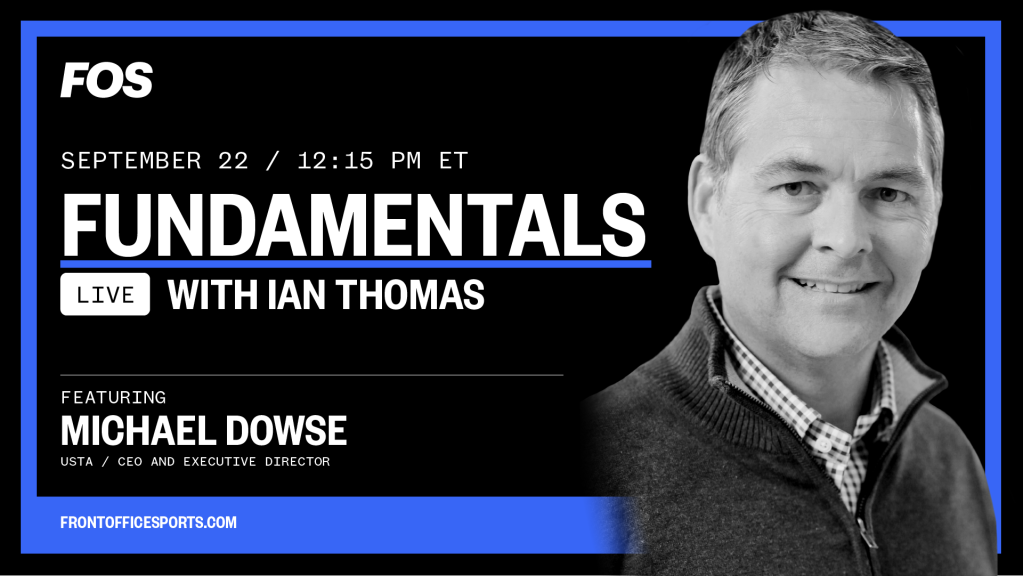(*The Symetra Tour is a proud partner of Front Office Sports)
In 2013, the LPGA’s Symetra Tour was comprised of 15 events with $1.6 million in prize money on the line. In 2019, golf’s rising stars will play in 24 events for over $4 million in prize money. In the words of Chief Business Officer Mike Nichols, it was a “six-year overnight success story.”
Nichols joined Front Office Sports CEO Adam White to chat about the tour’s growth, their overall sponsorship strategy and what the tour offers for the communities that they host tournaments in.
Edited highlights appear below:
What has been contributing to the Symetra Tour’s growth factor? (0:29):
“There’s two big things. When I first started with the tour.. .we had to look at how we were selling the product working with our partners. And our tournament model, frankly, was broken, and so we had a lot of turnover. In 2013, in that first six-month period we were able to add four tournaments, but we lost five in that same six months. So when you add four tournaments and you lose five, you’re thinking, ‘Well I did a lot of work, and we’re going in the wrong direction here.’ So we had to fix that tournament model.
“Then, secondarily, we had to look at the companies that we were approaching. I think we were trying too much to be the LPGA Tour. The LPGA Tour is a good [business to customer] opportunity for global brands who are trying to reach a mass market. Our strength is really in the B-to-B space. We really had to look at who our partners were, who we were approaching and setting the expectations for what we could do well, which is really to deliver a B-to-B experience in the local communities in which we play.”
[mc4wp_form id=”8260″]
Sales pitch for investing in the Symetra Tour (2:36):
“When Symetra first joined us, they were sort of a challenger brand as we’re a challenger tour, but we like to think we’re growing out of that a little bit. But, for them, it was an opportunity to put their name on an entire tour. They were trying to get in front of folks in the banking space, as well as putting their advisors out there and trying to build the business in the B-to-B space of the tours. If we’re making a pitch to a new company, I would tell them we can deliver you 24 markets in which you can entertain customers.”
“The good news is we play in major markets like Charlotte and Atlanta and Orlando, but we also play in some secondary markets that maybe are harder to find opportunities to entertain folks. So one of the things that we found with Symetra is that we’ve delivered them a lot of markets that are sometimes hard to figure out where opportunities are [for businesses] to take care of their top producers, or their top folks in the field who are selling, or their customers, or prospective customers…We have anecdotal evidence where some folks have brought folks out and written a $500,000 premium just for that day on the golf course. That pays for a lot of your sponsorship cost.”
See More: Ryan Musselman, SVP, Global Partnerships at Infinite Esports & Entertainment
On the Symetra Tour taking off as the developmental tour of the LPGA Tour (5:27):
“In calling it “the official qualifying tour,” we want people to look at this and say ‘These are professional golfers playing at the highest level, and all they are doing is looking for their opportunity.’ The most fun day of the year for me is the Sunday of our tour championship, when we award those ten cards and you see the families out there and the audience and these young ladies realizing their dreams.”
“It’s very cool, but what’s really changed from now versus back in 2012 is that we’ve been graduating the top ten players onto the LPGA Tour, but the last ten players that we’ve graduated over the last two or three years are actually staying now [on the LPGA Tour]. But over the last three years, nine of the 10 players that we’ve graduated to the LPGA Tour have maintained LPGA Tour status, which is huge.”
See More: Ryan Bishara, Director, Corporate Partnership Strategy at Los Angeles Football Club (LAFC)
What do you look for in choosing a host community for an event? (7:00):
“As with anything in golf, it really starts with the sponsor and identifying the sponsor. For example, we play in El Dorado, Arkansas, which is a very small community that you wouldn’t otherwise know except that [it’s the home of] Murphy USA. A $2.5-billion-dollar company based in El Dorado, Arkansas, and they said “you know we want to have a Symetra Tour event in our community. So a lot of it is finding those sort of communities.”
“We have a tournament in Florida, Florida’s Natural Charity Classic, a town of Lake Wales… where the co-op of Florida’s Natural… is based and that tournament over the last 11 years has given back $1.8 million to their local community through hosting the event. Why that’s worked from a B-to-B standpoint is they’ve taken that event and they’ve turned it into an annual meeting of all their business partners. [The business partners] contribute, they sponsor the event, and it allows them to give more money in the community than maybe anything else they could do in a community that size. So it’s about finding the community match with the sponsor and sort of making sure that everybody’s expectations and goals are met and understanding what those are from the get-go.”
(*The Symetra Tour is a proud partner of Front Office Sports)

















